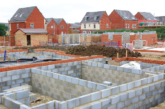
The temporary relaxation of planning restrictions offers a window of opportunity for developers. But they need to act now to take full advantage, says George Cardale, Head of Residential Development Sales for Savills.
There continues to be much discussion of a ‘housing shortage’ and it will no doubt be a key component of pre-election debate. In the UK we have the lowest level of house building since the Second World War and at a time when we need it the most. Until recently, developers have faced land and planning constraints while first time buyers have been unable to secure finance to get on the ladder.
However, two important initiatives are beginning to make a tangible difference, bringing first time buyers back to the market and easing the delivery of sites, in city centres in particular.
Help to Buy
The Government’s Help To Buy initiative has been one of these. It enables buyers to secure a new build property with a 5% deposit and 15% equity loan, rather than them having to find the full 20%. It has proven to be a popular policy. Since its launch more than 38,000 households have been supported by the scheme. Of these, 83% are first time buyers (31,640) and 94% of total sales are outside London.
The return of the first time buyer in cities such as Bristol has had a knock on effect and brought developers back to the market. The challenge now is finding sufficient sites and at the right price.
Delivery of sites
In order to ease the delivery of sites, in May 2013 the Government introduced a temporary relaxation of planning restrictions giving more freedom to convert offices to residential accommodation. Permitted Development Rights, as the initiative is known, will ultimately mean that commuter cities can become a place where its workforce can work, play and live.
Brownfield sites which were previously considered unviable are now an attractive proposition. Office space that wasn’t being let can now be refurbished and sold on as residential.
City centres
This is where the opportunity for developers lies, but unless the government chooses to extend the policy, developers only have until May 2016 to take full advantage.
In Bristol, where I live and work, we have seen more than 70 offices granted permitted development rights for the conversion to residential over the last 12 months – that’s 800 homes.
Converting office space to living space is no mean feat and brings technical challenges. Yet its benefits are two fold: it helps to clean up some of a city’s more unattractive buildings, many of which were vacant. And it helps to provide much needed housing stock.
It won’t be for everyone. But I would urge those developers with an interest in the scheme to act now to take full advantage.
George Cardale is National Head of Residential Development Sales at Savills. Savills Residential Development Sales represents new-build developers around the country. To discuss being represented by the Savills sales team, email gcardale@savills.com To see the current selection of newly-built properties available through Savills, go to www.savills.co.uk








